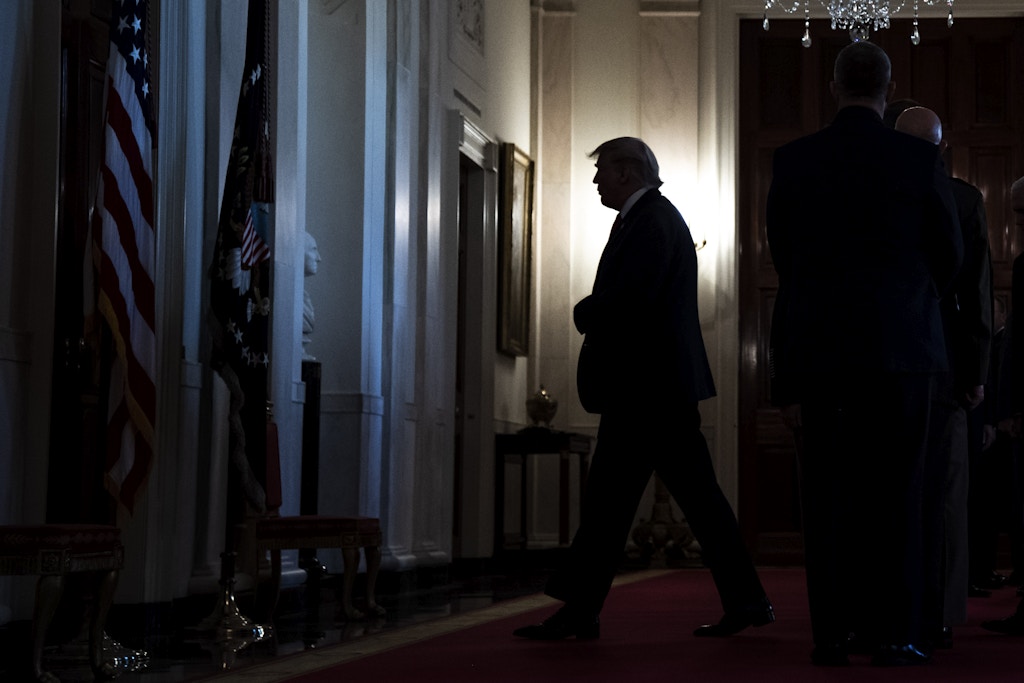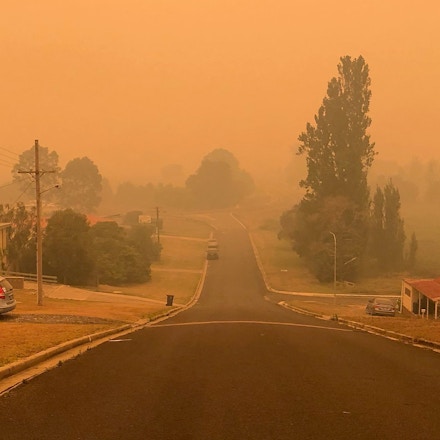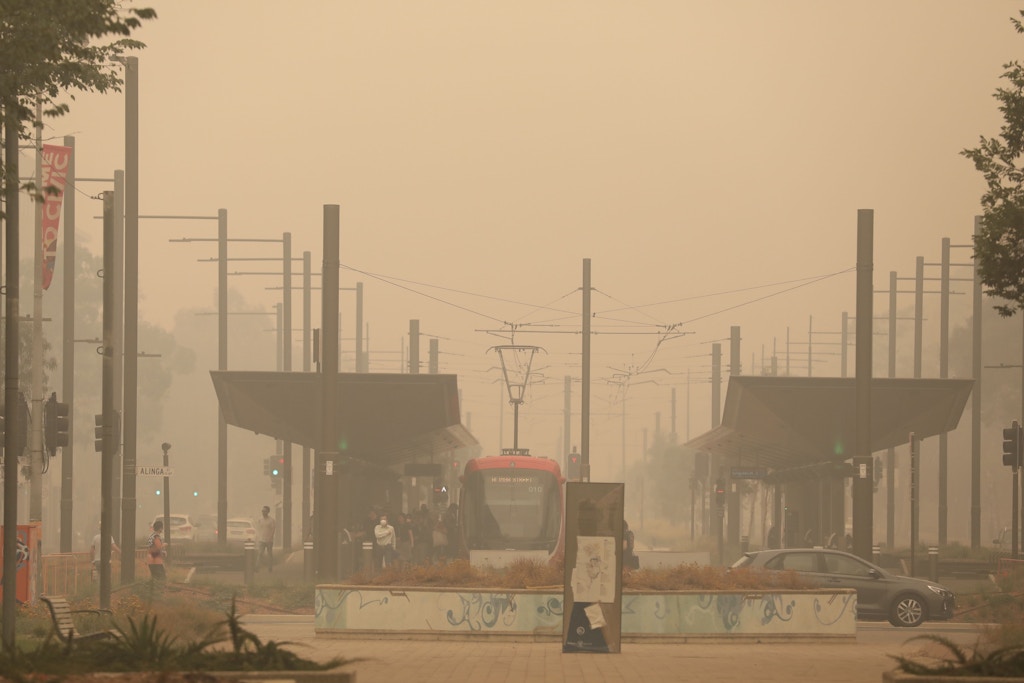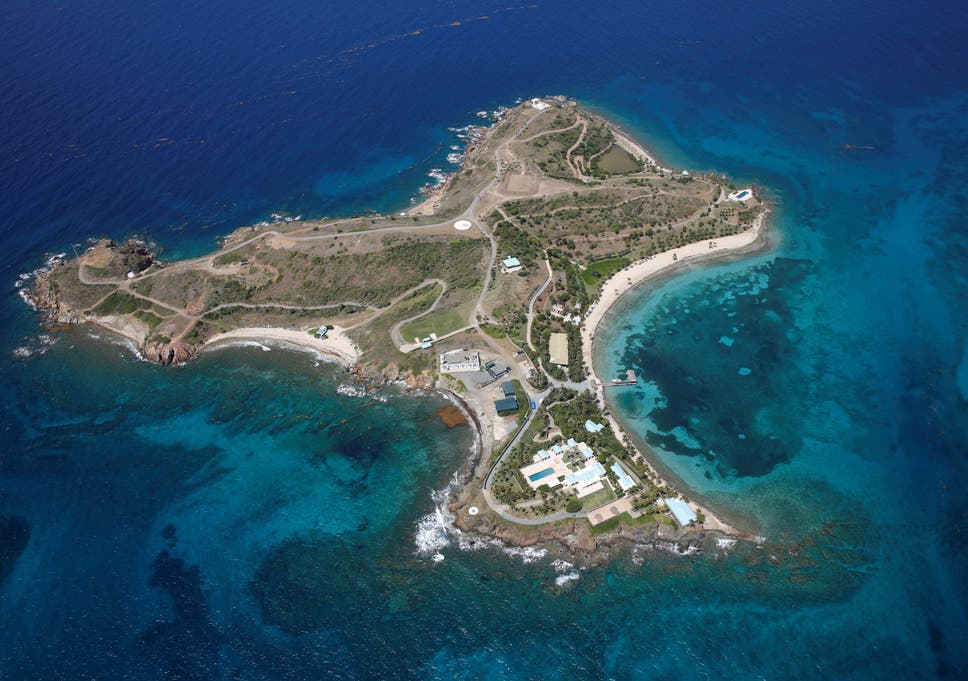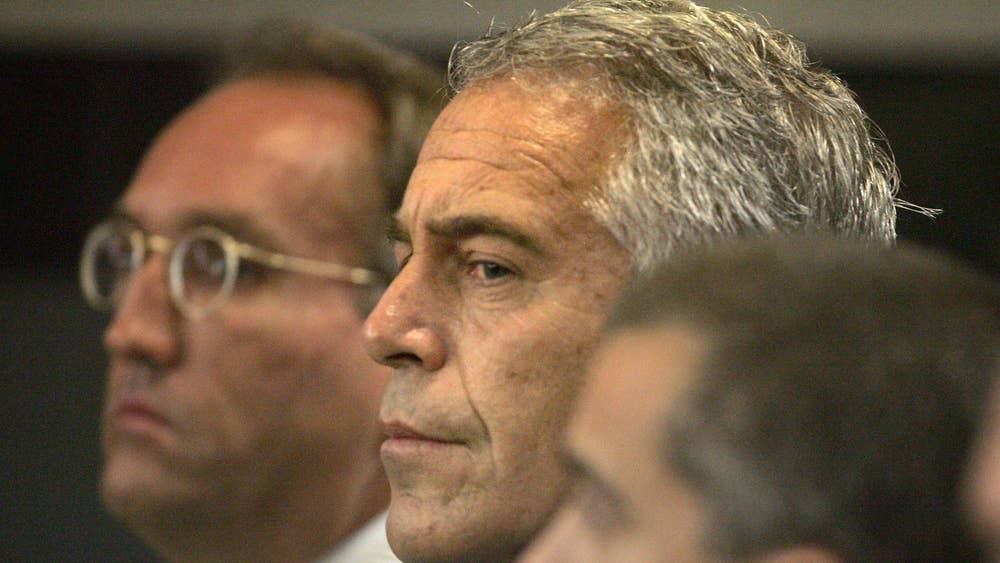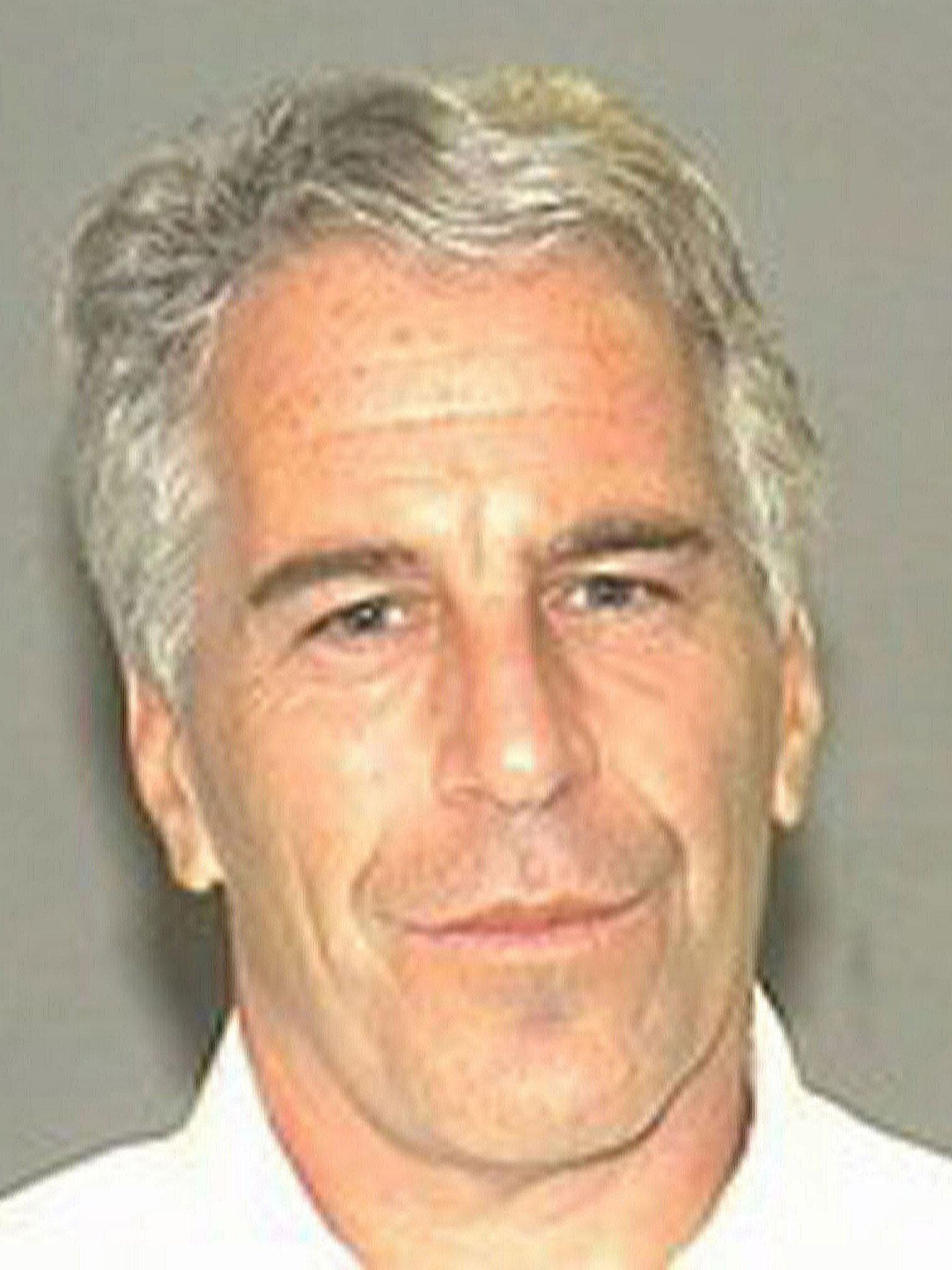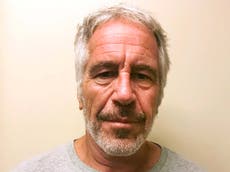Republicans Attack Democrats for Saying Qassim Suleimani Was Assassinated, and Reporters Play Along
 Robert MackeyJanuary 9 2020, 3:33 p.m.
Robert MackeyJanuary 9 2020, 3:33 p.m.THE EXTENT to which Republican talking points shape the political debate on American television was on full display on Tuesday’s edition of “The View,” when Meghan McCain falsely accused Sen. Elizabeth Warren of a “flip-flop” on the killing of Qassim Suleimani. Why, McCain demanded to know, had Warren first referred to the Iranian general killed last week in Baghdad by an American missile as “a murderer” and later as “a senior foreign military official” who was “assassinated”?
Given that Suleimani’s support for militias in Iraq made him “responsible for hundreds of American troops’ deaths,” McCain asked, why was it “so hard” for Warren to just “call him a terrorist?”
There was, in fact, no contradiction between the statements Warren made last Thursday and Friday, and she told McCain that everything she had said about Suleimani and the manner of his killing was true. As the historian Kevin Kruse observed on Twitter, Warren had no more flip-flopped than a politician of the 1940s who referred to Hitler as a genocidal maniac one day and as the head of the German government the next.
It is similarly incorrect to suggest, as McCain seemed to, that describing the killing of a political or military leader as an assassination implies some sympathy for the targeted person. Hitler, for instance, was nearly killed by his aides in 1944, in a bomb plot everyone from Angela Merkel to the U.S. Holocaust Museum refers to as an “attempted assassination.”
But it is worth unpacking the exchange between Warren and McCain because it can help us understand the news media’s obsession with hounding Warren — and, to a lesser extent, fellow Democratic presidential candidates Sen. Bernie Sanders and Pete Buttigieg — for accurately describing the killing of a general from a nation the United States has not declared war on, at the express direction of the American president, as an assassination.
After she dismissed McCain’s false claim that she had somehow backed away from criticizing Suleimani by describing his killing as an assassination, Warren patiently explained that two things can be true at the same time: The Iranian general had equipped Iraqis to kill American soldiers in the past, and yet Donald Trump’s decision to risk war with Iran by killing him now was reckless.
“Think about Saddam Hussein,” Warren said to McCain. “You want to talk about a bad guy, right? However, going to war in Iraq was not in the interests of the United States. We lost thousands of American lives; it cost us here at home, it has cost us around the world.”
“The question, for the president of the United States,” Warren added, “is to understand what’s going on, have an overall strategy and pick an appropriate response.”
Join Our Newsletter
Original reporting. Fearless journalism. Delivered to you.
I’m in
McCain, however, was not satisfied with an answer that hinted at the complexity of the U.S. conflict with Iran’s proxies in Iraq, where Shiite militias armed by Suleimani regularly attacked American forces before 2012, but are now aligned with Iraq’s government and were key allies in the American-led campaign to shatter the ISIS caliphate. Echoing a Republican effort to smear Democratic critics of the Suleimani assassination as soft on terror, McCain prodded Warren to describe the general in simple terms. “Do you think he’s a terrorist?” McCain asked.
When Warren began by saying that Suleimani, who led a brigade of Iran’s Islamic Revolutionary Guard Corps, was “part of a group that has been designated,” McCain interrupted impatiently: “But is he a terrorist?”
“He’s part of a group that has been designated for terrorism,” Warren began again, at which point McCain cut in again to say, smugly, “So he’s not a terrorist?”
“Of course he is,” Warren replied. “He’s part of a group that our federal government has designated a terrorist. The question, though, is what’s the right response? And the response that Donald Trump has picked is the most incendiary and has moved us right to the edge of war, and that is not in our long-term interests.”
On social media, ABC News reported that part of the exchange on the talk show as news, implying that it was something of a triumph for McCain, who had badgered Warren into admitting that the general was, according to the U.S. government, also a terrorist.
Asked several times by @MeghanMcCain if Gen. Soleimani was a terrorist, Sen. Elizabeth Warren says, "Of course he is. He's part of a group that our federal government has designated as a terrorist. The question, though, is what's the right response?" https://t.co/tmqF9En73W pic.twitter.com/kr7By0AyEl— ABC News (@ABC) January 7, 2020
But McCain was acting less like a hard-hitting interviewer and more like a political operative by basing her questions on Republican talking points attacking Warren and trying to reduce the complexity of Suleimani’s role by labeling the general a terrorist.
To Defend a Reckless Assassination, Republicans Smear Critics Who Even Use the Word, and Reporters Play Along
In the week since Suleimani was killed, the Trump administration has refused to accept that the president’s order to kill one of Iran’s most senior government officials amounted to an assassination, and his political allies have attacked anyone who dares to speak the plain truth.
After the Republican National Committee’s rapid response director, Steve Guest, bizarrely accused Warren, Sanders, and Buttigieg of parroting “Russian talking points” by calling an assassination an assassination, Nikki Haley, Trump’s former U.N. ambassador, turned the bad-faith dial up to 11 by going on Sean Hannity’s Fox News program to claim that “the only ones that are mourning the loss of Suleimani are our Democrat leadership and our Democrat presidential candidates.”
What’s instructive is to see how political reporters, sensing that Republicans would attack Democrats for using the word assassination, responded by pressing the presidential candidates who used the word to say they were wrong to do so, and asking those who did not use it to comment on those who did.
On the trail in Iowa on Saturday, for instance, Jeff Zeleny of CNN seemed to think it was more important to talk about the potential Republican attacks on Warren’s use of the word assassination than her persuasive case that Trump’s decision to kill Iran’s most revered general in a third country was a dangerous provocation. So Zeleny suggested to Warren that the word implied some sympathy for the general. “Given everything that Suleimani has done, if you believe that he has done bad deeds, why is this an assassination?” Zeleny asked.
Warren took question after question on Soleimani after not referencing the killing once during her town hall. When pushed on why she called it an assassination, @ewarren responds: “Yes, it is...he has ordered the assassination of a high-ranking gov official in the gov of Iran.” pic.twitter.com/nYHskBAxi4— Tara Prindiville (@taraprindiville) January 4, 2020
“Donald Trump has ordered the killing of a government official of Iran,” Warren replied matter-of-factly. “But is assassination the right word, given his deeds?” Zeleny asked again. “Yes, it is,” Warren said, nodding. “He has ordered the assassination of a high-ranking government official in the government of Iran.”
After Sanders immediately described Suleimani’s killing as an assassination, a Fox News reporter asked Michael Bloomberg if that was appropriate. “This is a guy who had an awful lot of American blood on his hands,” Bloomberg replied. “I think that’s an outrageous thing to say. Nobody that I know would think that we did something wrong in getting the general.”
When asked if he would call Suleimani's death an assassination (by @alexrego_tweets) @MikeBloomberg said "that's an outrageous thing to say." On the proper way to speak about his death, MB "I don't know, get a dictionary and take your pick." https://t.co/JMOgO4zqVd pic.twitter.com/38IfwjTELP— Tim Perry (@tperry518) January 3, 2020
When Anderson Cooper in turn asked Sanders to respond to Bloomberg’s response, the senator suggested that it was self-evidently true that “it was an assassination” and “in violation of international law.” “This guy was a bad news guy, but he was a ranking official of the Iranian government,” Sanders explained. “And you know what? Once you get into violating international law in that sense, you can say there are a lot of bad people all over the world running governments. … Once you start this business, of a major country saying, ‘Hey, we have the right to assassinate,’ then you’re unleashing international anarchy.”
Buttigieg answered a question about the killing at an event in New Hampshire on Saturday by saying, “When you do something as provocative as assassinate a significant foreign official on the soil of a third country, you better think through all of the things that are going to happen next.” By the next morning, when Jake Tapper asked him to comment on Warren and Sanders using the word, the former mayor appeared to sense danger and retreated. “I am not interested in the terminology,” Buttigieg said. “I’m interested in the consequences, and I’m interested in the process. Did the president have legal authority to do this? Why wasn’t Congress consulted? It seems like more people at Mar-a-Lago heard about this than people in the United States Congress who are a co-equal branch of government.”
The Trump Administration Copies the Obama Administration’s Claim That a Legal Killing Cannot Be an Assassination
Beyond the obvious political motives for Republicans to describe the killing of Suleimani as no different from the killing of any terrorist plotting an attack on Americans, there are legal reasons for the administration to reject the word assassination — namely that American policy, spelled out in a series of executive orders, has explicitly banned the practice since 1976.
As my colleague Jim Risen explains, “The ban was put in place following disclosures by the Church Committee in the 1970s, which revealed that the CIA had secretly attempted to kill a series of foreign leaders, most notably Cuba’s Fidel Castro.”
At that time, he adds, “no one in the American government or media publicly defended assassination as a tool of a modern nation-state. It was simply not the accepted practice of a democracy that wanted to serve as a role model for the world.”
The Trump administration’s rationale, that Suleimani was not assassinated because he was killed while allegedly planning an “imminent” attack on Americans, making his killing an act of national self-defense, is almost identical to the Obama administration’s argument for why the killing of Osama bin Laden did not violate the assassination ban.
Barack Obama’s attorney general, Eric Holder, told law students and faculty at Northwestern University in 2012, “It is entirely lawful — under both United States law and applicable law of war principles — to target specific senior operational leaders of al Qaeda and associated forces.”
“This is not a novel concept,” Holder continued. “In fact, during World War II, the United States tracked the plane flying Admiral Isoroku Yamamoto — the commander of Japanese forces in the attack on Pearl Harbor and the Battle of Midway — and shot it down specifically because he was on board. As I explained to the Senate Judiciary Committee following the operation that killed Osama bin Laden, the same rules apply today.”
“Some have called such operations ‘assassinations,’” Holder added. “They are not, and the use of that loaded term is misplaced. Assassinations are unlawful killings. Here, for the reasons I have given, the U.S. government’s use of lethal force in self defense against a leader of al Qaeda or an associated force who presents an imminent threat of violent attack would not be unlawful — and therefore would not violate the Executive Order banning assassination or criminal statutes.”
Hours after last week’s killing of Suleimani, senior State Department officials, speaking to reporters anonymously, suggested that it was glaringly obvious why the strike was not an illegal assassination, and cited the targeting of the Japanese admiral in 1943 as precedent. “It’s shooting down Yamamoto,” one official said. “Jesus, do we have to explain why we do these things?”
The parallel with Yamamoto is, however, less than exact, given that the United States was at war with Japan when he was killed, but did not declare war on Iran before killing its most important general on a foreign visit.
The weakness of the case for describing Suleimani as a legitimate target based on his official role in Iran’s military, given the lack of a declaration of war, makes it even more important for the administration to convince people that he was a terrorist.
To that end, another unnamed State Department official told reporters that the Iranian general was a “devilishly ingenious” terrorist comparable to bin Laden and claimed that “very solid intelligence” suggested that Suleimani “was planning imminent attacks against American diplomats and our armed forces members in Iraq, Lebanon, Syria, and in the region,” so “this was an action taken in self-defense.”
“The conditions were met to take decisive action to eliminate a very, very, very effective terrorist in the heart of the Middle East to save hundreds of American lives,” the same official said.
Patrick Granfield, who worked in the State Department and the Defense Department under Obama, pointed out that another way of looking at the change in the behavior of Suleimani’s militias in Iraq is to say that Iranian-backed militias were not linked to a single American death from the time the Iran nuclear deal was signed in 2015 until more than a year after Trump sabotaged the deal in 2018 by withdrawing from it and beginning his campaign of “maximum pressure.”
Attacks on U.S. Soldiers Are Classified as Terrorism to Justify the Assassination
One overlooked aspect of the administration rationale for killing Suleimani is the claim that, as a senior State Department official put it last week, he was “the architect of Iran’s major terrorist attacks over the last 20 years.” As evidence, the official pointed to one recent estimate of how many U.S. service members were killed by Iraqi Shia militias trained and equipped by Suleimani’s Quds Force. “He’s killed 608 Americans in Iraq alone,” the official told reporters on Friday.
That number was a slight misstatement of a Pentagon estimate of deaths attributed to proxies sponsored by Iran’s Islamic Revolutionary Guard Corps, which was released on April 4, 2019 — just four days before the IRGC was officially designated a terrorist groups by Trump.
“During Operation Iraqi Freedom, DoD assessed that at least 603 U.S. personnel deaths in Iraq were the result of Iran-backed militants,” Navy Cmdr. Sean Robertson, a Pentagon spokesperson, told Military Times in an email last April. “These casualties were the result of explosively formed penetrators (EFP), other improvised explosive devices (IED), improvised rocket-assisted munitions (IRAM), rockets, mortars, rocket-propelled grenades (RPG), small-arms, sniper, and other attacks in Iraq,” the spokesperson added.
Another supporter of the assassination, Sen. Ted Cruz, R-Texas, pointed to an earlier Defense Department estimate, produced during the Obama administration in 2015, that about 500 soldiers, sailors, airmen, and Marines had been killed in Iraq by explosives or groups linked to Iran. Suleimani “was a terrorist directly responsible for the murder of over 500 US service men & women,” Cruz wrote on Twitter. “Why” he asked, are congressional Democrats “outraged that he’s finally dead?”
Suleimani had been “conducting terrorist activities against us and our coalition partners for over 20 years,” Defense Secretary Mark Esper said on Tuesday. “He has the blood of hundreds of Americans, soldiers, on his hands and wounded thousands more.”
All of these statements suggest that the description of Suleimani as a terrorist rests mainly on the hundreds of deadly attacks on American soldiers by the Iraqi militias he armed during Operation Iraqi Freedom, the U.S. combat mission which began with the initial invasion in March 2003 and concluded in August 2010. Obama withdrew all U.S. combat forces from Iraq at the end of 2011. American service members only returned to Iraq in 2014 to confront ISIS.
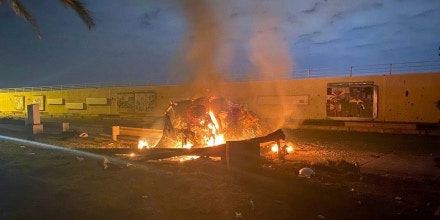 Read Our Complete CoverageTargeting Iran
Read Our Complete CoverageTargeting IranAlthough Trump has referred to the killing of an American defense contractor by rocket fire attributed to an Iranian-backed militia in Iraq last month as just the latest in a series of intolerable attacks, an analysis of a Pentagon casualty database, cross-referenced with the official death toll from the Department of Defense and news reports and obituaries, reveals the surprising fact that none of the nine American service members killed in action in Iraq since 2014 appears to have died at the hands of Iranian-backed militias. All of the fatalities came in connection with the fight against Islamic State militants.
In other words, not one American soldier was killed in Iraq by the proxy network under Suleimani’s control in at least the previous eight years before he was assassinated last week in Baghdad while allegedly planning an “imminent” attack on Americans.
A spokesperson for the American-led coalition confirmed to The Intercept on Friday that all nine U.S. service members killed in action while serving in Iraq from 2015 through 2019 were battling ISIS.
Although it might surprise anyone who has listened to the administration and its supporters justify the assassination of Suleimani to learn that Iranian-backed militias in Iraq have not killed an American soldier in nearly a decade, it is well-known among policymakers in Washington that when American troops began to depart Iraq in earnest in 2011, some leaders of Shia militias pushed to launch revenge attacks on them on the way out. Suleimani ordered them not to, arguing that the contest had been won and that the best strategy was to leave American troops alone.
Shia militia leaders over the next decade would regularly press to launch attacks for one reason or another, but Suleimani consistently held them back. That changed recently, as the Trump administration walked away from the Iran nuclear deal and implemented crippling sanctions, sending the Iranian economy into a nosedive.
Asked on Wednesday by my colleague Ryan Grim about Suleimani’s moderating influence on Shia militias over the last decade, Esper, the defense secretary, insisted that recent history that mattered more. “I think you should look at the uptick in attacks that have happened in the last few years. That doesn’t look very moderating,” he said as he left a closed-door briefing in the Capitol.
Former Gen. Stanley McChrystal, in a recent BBC documentary, said that it was a mistake to think of Suleimani as “evil,” but rather as an Iranian patriot carrying out Iranian foreign policy, as odious as that may be to American policymakers. Asked about McChrystal’s comments, Sen. Ted Cruz said that Suleimani was a “terrorist madman.”
“Murdering Americans, murdering over 603 U.S. service men and women, targeting civilians, targeting women and children, plotting a bombing of the Saudi ambassador in Washington, D.C., at Cafe Milano — which, had it been successful, could have killed over 100 civilians in the United States — those are the actions of a terrorist madman, and murdering women and children for political ends is evil,” Cruz told The Intercept.
There is no doubt that the Quds Force under Suleimani’s command supported militant groups like Lebanese Hezbollah that have killed civilians in terrorist attacks, and a huge number of civilians have died in Syria at the hands of the government he backed. Still some experts, like the political philosopher Michael Walzer, have argued persuasively that attacks on soldiers — particularly soldiers occupying foreign nations — should not be considered terrorism.
Indeed, terrorism is defined in U.S. law as, “premeditated, politically motivated violence perpetrated against noncombatant targets by subnational groups or clandestine agents.”
And while the death or life-changing injury of every American service member killed or wounded by Iranian-backed militia forces in Iraq is undoubtedly tragic, Walzer has argued that it is important to distinguish that sort of violence from attacks on civilian noncombatants.
“Terrorism is the deliberate killing of innocent people, at random, in order to spread fear through a whole population and force the hand of its political leaders,” Walzer wrote in 2002. “The common element is the targeting of people who are, in both military and political senses, noncombatants: not soldiers, not public officials, just ordinary people. And they aren’t killed incidentally in the course of actions aimed elsewhere; they are killed intentionally.”
“I don’t accept the notion that ‘one man’s terrorist is another man’s freedom fighter,’” Walzer wrote. “In the 1960s, when someone from the FLN put a bomb in a cafe where French teenagers gathered to flirt and dance and called himself a freedom fighter, only fools were fooled,” he added, in reference to excuses once made for terror attacks aimed at French civilians by Algerian militants.
In an interview in 2006, Walzer was asked if it was ever possible for attacks on soldiers to be acts of terrorism. He answered:
My instinct is to say that attacks on soldiers are not terrorist attacks. That does not make them right, terrorism is not the only negative moral term in our vocabulary. I did not think that the plane that flew into the Pentagon in 2001 was a terrorist attack or, better said, it was a terrorist attack only because the people in the plane were innocent civilians who were being used and murdered. But if you imagine an attack on the Pentagon without those innocent people in the plane, that would not have been a terrorist attack — whereas the attack on the Twin Towers was terroristic.
I feel the same way in the Israeli cases: Whatever you want to say about Palestinian resistance to the occupation, there is a difference between attacking soldiers and killing civilians, and it is an important moral difference.
Amid Doubts About the Intelligence Leading to an Act of War, Mike Pompeo Emerges as This Administration’s Dick Cheney
The transcript of the initial State Department briefing also gives a sense of how genuinely shocked the senior State Department officials were to hear a reporter say that they had assassinated Suleimani.
When the reporter asked if the administration was concerned, in the aftermath of killing Suleimani, who had close ties to senior Iraqi government officials, including the current prime minister, “about managing now relations with Iraq … to be able to keep U.S. forces based there,” one of the American officials replied: “I’ve never heard anybody argue that we shouldn’t defend ourselves if we’re, like, attacked. I just — is there a question behind the question?”
“Well, I mean, it’s an assassination of an Iranian Government official,” the reporter answered.
“It’s not an assassination. Come on,” the unnamed State Department official said. “That is not true.”
“No, no, no, hold on,” a second official said. “Hold on, hold on. I did this for two years in the Bush administration. Assassinations are not allowed under law. Revenge killings, non-judicial executions are not. The criteria is, Do you have overwhelming evidence that somebody is going to launch a military or terrorist attack against you?”
However, the focus on Suleimani’s role in a campaign of attacks on U.S. soldiers in Iraq that concluded at least eight years ago, and Trump’s threatening tweet connecting the current standoff to the hostage crisis at the American embassy in Tehran in 1979 suggests that the assassination might well have been primarily about revenge.
In the days since that initial briefing, the administration has repeatedly refused to share any intelligence to support its claim that Suleimani was engaged in planning an imminent attack on Americans, even to members of Congress. Two American officials who received classified briefings after the strike on Suleimani told New York Times correspondent Rukmini Callimachi that “the evidence suggesting there was to be an imminent attack on American targets is ‘razor thin.’” The next day, a senior U.S. official told the Washington Post that Secretary of State Mike Pompeo, a military veteran who was previously in charge of the Central Intelligence Agency, had been pressing Trump to assassinate Suleimani for months.
As Joe Cirincione, a nuclear policy expert and former congressional staffer, observed on Twitter, the reporting suggested “that Pompeo was pushing to assassinate Soleimani for months or longer. This was not about an imminent attack. He just wanted him to kill him. It’s the kind of political assassination the CIA used to do in secret.”
At a public briefing this week, Pompeo responded to questions about the imminence of the threat posed by Suleimani by stating, illogically, that it could be found in his past acts, including the killing of a translator for the U.S. military in a December 27 attack linked to an Iranian-backed Iraqi militia.
This is the Trump administration conceding that there was no imminent threat. Not even under the broad & controversial definition of “imminence” that the Justice Department has sometimes used. The strike was illegal as well as astoundingly reckless. https://t.co/qNPDmTsGYd— Jameel Jaffer (@JameelJaffer) January 7, 2020
It was in retaliation for the killing of that translator, a recently naturalized American citizen employed by a defense contractor, that Trump first escalated the confrontation with Iran by ordering airstrikes on the Iraqi Shia militia blamed for the attack killing 25 of its members. In response, the militia led a protest at the U.S. embassy in Baghdad which was covered extensively on cable news, apparently enraging Trump and prompting him to order the assassination of Suleimani.
Pompeo was reportedly behind Trump’s decision, in April of last year, to add Iran’s Islamic Revolutionary Guard Corps, including the Quds brigade that Suleimani led, to the State Department list of foreign terrorist organizations, the first time that the United States designated part of another nation’s government as a terrorist group.
A month later, amid heightened tensions following Trump’s decision to sabotage the Iran nuclear deal, the administration claimed, without presenting evidence, that new intelligence indicated that Iran was preparing its proxy groups in Iraq and Syria to attack American forces. The following day, the spokesperson for U.S. Central Command rebuked a senior British officer, Maj. Gen. Christopher Ghika, the deputy commander of the American-led coalition fighting ISIS, who cast doubt on that intelligence, by telling reporters, “We’ve seen no change in the posture” of Iran’s proxy groups.
After a classified briefing on the Suleimani killing from administration officials including Pompeo on Wednesday, Sen. Mike Lee, a Republican and a Trump supporter, emerged from the secure facility in the Capitol where it was held to tell reporters that he was outraged by the flippant attitude of the briefers, and deeply disappointed that they did not provide more information about “the legal, factual, and moral justification for the attack.”
.@SenMikeLee
: "It is not acceptable for officials within the executive branch of government…to come in and tell us that we can't debate and discuss the appropriateness of military intervention against Iran. It's un-American. It's unconstitutional and it's wrong." pic.twitter.com/fVSE6b3EM0— CSPAN (@cspan) January 8, 2020
As a result, Lee said, he had decided to back a war powers resolution demanding that the president get Congressional authorization for any further military attacks on Iran.
Rep. Pramila Jayapal, a Democrat from Washington who supports legislation introduced by Sen. Bernie Sanders and Rep. Ro Khanna to cut off funding for offensive action against Iran absent congressional approval, told reporters: “President Trump recklessly assassinated Qassim Suleimani. He had no evidence of an imminent threat or attack and we say that coming from a classified briefing where again, there was no raw evidence presented that there was an imminent threat.”
Rep. Pramila Jayapal: "President Trump recklessly assassinated Qasem Soleimani. He had no evidence of an imminent threat or attack." pic.twitter.com/htYowEvXOM— The Hill (@thehill) January 8, 2020
“Just as we were led into Vietnam and Iraq by lies, the Trump administration is misleading us on Iran,” Sanders said on Thursday. “They have justified the assassination of Qassim Suleimani by claiming that he was planning ‘imminent attacks’ on hundreds of Americans in the region, and yet they have produced no evidence that would justify this claim, even in a classified setting.”
Democratic Senator Bernie Sanders said that the Trump administration had not provided evidence to justify the killing of Qassem Soleimani, even under classified settings pic.twitter.com/vQMozwe9BI— Reuters (@Reuters) January 9, 2020
On Thursday evening, as my colleague Alex Emmons reports, the House passed a war powers resolution which instructs Trump “to terminate the use of United States Armed Forces to engage in hostilities in or against Iran or any part of its government or military” unless Congress makes a declaration of war or there is “an imminent armed attack upon the United States.” The measure, as the PBS NewsHour correspondent Yamiche Alcindor noted, “is not binding on the president and would not require his signature.” Speaker Nancy Pelosi told reporters that the resolution has “real teeth” because “this is a statement of the Congress of the United States, and I will not have that statement diminished by whether the president will veto it or not.” A vote in the Senate is expected next week.
Ryan Grim contributed reporting from Washington.
Updated: January 10, 2020, 7:30 p.m. ET
This article was updated to note that the Pentagon has now confirmed The Intercept’s reporting that all nine U.S. service members killed in Iraq since the end of 2011 died fighting ISIS, not Iranian-backed militias directed by Gen. Qassim Suleimani.
RELATED

Donald Trump Murdered Qassim Suleimani
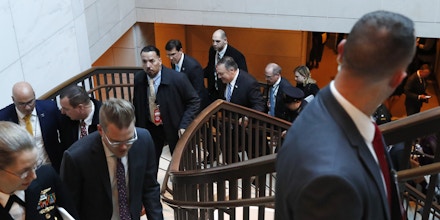
Trump Administration Failed to Convince Members of Congress Its Assassination of Suleimani Was Justified

Secret Iranian Spy Cables Show How Qassim Suleimani Wielded His Enormous Power in Iraq

As Sanders and Warren Vow to Block War With Iran, Biden and Buttigieg Offer Better-Run Wars
